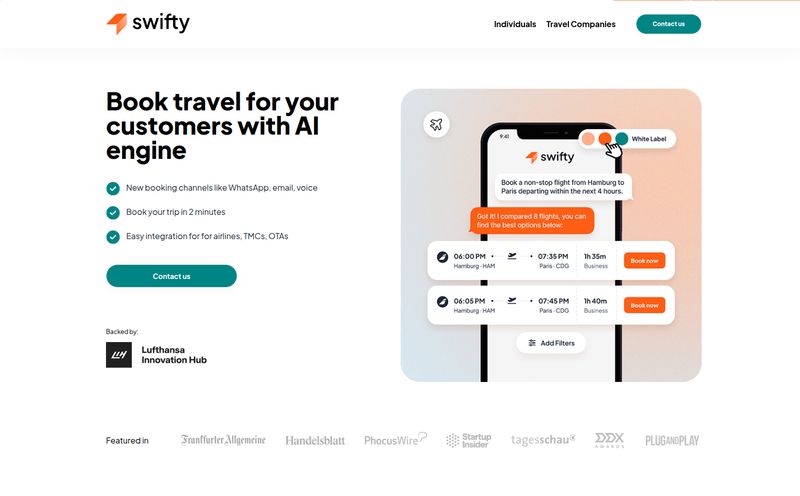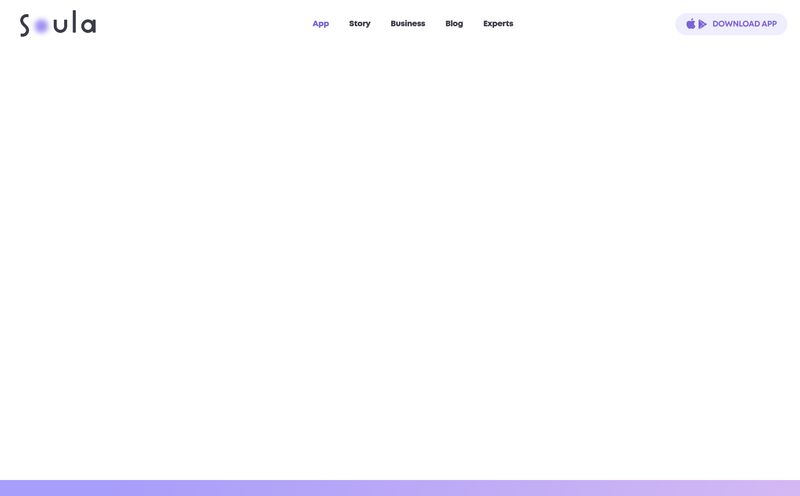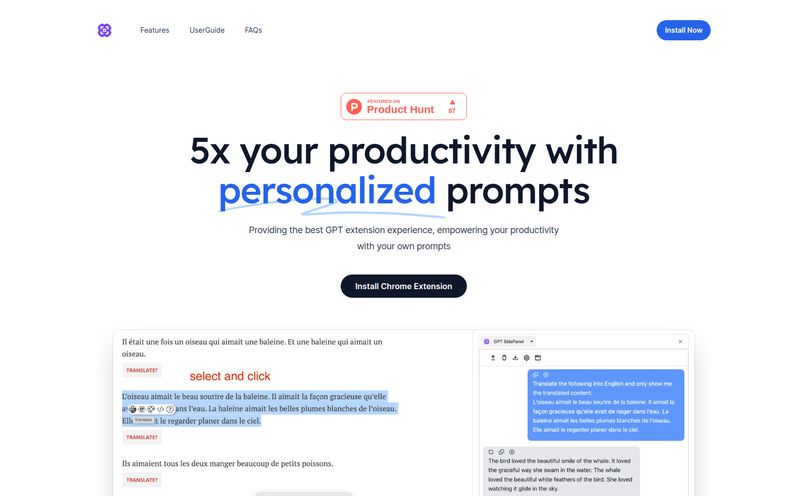If you're a serious reader, you probably have a… complicated relationship with Goodreads. For years, it’s been the default option, the big social network for book nerds. But it’s also felt a bit like that one dusty, overcrowded bookstore you only visit out of habit. It’s clunky, owned by Amazon (which feels a little icky to some), and the recommendations have always felt a bit… generic. Like a barista who just keeps suggesting the most popular drink on the menu, regardless of what you actually like.
For a while now, I've been on the lookout for something different. Something smarter. Something that gets me as a reader. And folks, I think I’ve found it. It’s called The StoryGraph, and it’s not just a replacement; it’s an upgrade.
What Exactly Is The StoryGraph?
On the surface, The StoryGraph does what you’d expect: it helps you track your reading and find new books. But that's like saying a smartphone just makes calls. The magic is in the how. Instead of just asking you what genres you like, The StoryGraph goes deeper. It’s built around the idea that what we want to read is often tied to our mood.
Ever finish a heavy, soul-crushing literary novel and think, “Okay, now I need something light, adventurous, and funny”? The StoryGraph is built for that exact moment. It uses a fascinating mix of machine learning and user-submitted data to categorize books by mood, pace, and themes. It's less about a book's marketing category and more about its soul.
The Features That Made Me Switch
I didn't jump ship from Goodreads overnight. It took a few killer features to really win me over. These are the ones that made me a total convert.
Finally, Some Truly Insightful Stats
I’m a data guy. I love seeing my habits laid out in front of me, and Goodreads’ yearly “You read X books” graphic just wasn’t cutting it. The StoryGraph, on the other hand, gives you beautiful, detailed charts and graphs that are genuinely insightful. You can see your reading broken down by mood (am I reading more reflective books this year?), pace, page count, fiction vs. nonfiction, and a whole host of genres.
It’s like getting a personalized annual report on your own brain. Seeing my reading habits visualized like this has actually helped me be more intentional about what I pick up next. It’s incredibly cool, and probably my favorite part of the whole platform.

Visit The StoryGraph
Finding Your Next Read by Vibe, Not Just by Bestseller List
This is the platform's killer app. The recommendation engine is a work of art. You can literally tell it, “I’m in the mood for a hopeful, adventurous, and medium-paced book with strong character development and a bit of mystery.” The platform then spits out a tailored list of suggestions. It feels like having a conversation with a ridiculously well-read friend who knows your tastes inside and out.
I’ve discovered so many hidden gems this way—books that would never have crossed my path on other platforms because they weren’t bestsellers or from big-name authors. It’s pure discovery, and it’s brought a lot of joy back into my book selection process.
A More Nuanced Way to Rate Books
Has this ever happened to you? You finish a book. It wasn't a 3-star read... but it wasn't quite a 4-star, either. It was a solid 3.5. Or maybe even a 3.75! Goodreads forces you into a rigid 5-star box. The StoryGraph breaks free with half and quarter-star ratings. It might seem like a small thing, but for anyone who loves to meticulously rate and review, it’s a revelation. It allows for a level of nuance that just feels more honest and accurate to the reading experience.
Content Warnings: Read Safely and Comfortably
This is a huge one, and something I deeply respect. The StoryGraph allows users to add specific content warnings for books, covering everything from violence and gore to grief, trauma, and more. This isn’t about censorship; it's about empowerment. It gives readers the ability to make informed decisions about what they’re mentally and emotionally up for. In an age where we’re all a bit more conscious of protecting our mental space, this feature feels both modern and profoundly considerate.
The StoryGraph vs. Goodreads: The Real Showdown
So, how does it really stack up against the old giant? For me, it’s no contest. Goodreads feels like a massive, chaotic social network that happens to be about books. The StoryGraph feels like a tool built for readers. It’s clean, it’s focused, and it’s independent (no Amazon looming in the background).
And the best part? The developers knew that switching would be a pain. So they made it ridiculously easy. You can export your entire Goodreads library—ratings, shelves, reviews, and all—and import it directly into The StoryGraph in minutes. I did it, and it was painless. All my reading history, suddenly supercharged with all-new stats. A truly smooth move.
Is It All Perfect? A Few Honest Caveats
Okay, it's not a complete utopia. The platform is still growing. The highly anticipated Book Clubs feature is still listed as “coming soon,” which is a bit of a tease. And because the recommendations are powered by machine learning and user tags, the social suggestions—like finding reading buddies—can sometimes be a little off. It’s an algorithm, not a mind reader, after all.
There's also a slight learning curve. To get the most out of it, you do need to spend a little time setting up custom tags and maybe tweaking your reading preferences. But I see this as a pro, honestly. The 15 minutes I spent fine-tuning my profile has paid off tenfold in the quality of recommendations I get.
Let's Talk About The Price
Here’s the great news: the core experience of The StoryGraph is completely free. You can track, review, get stats, and use the recommendation engine without paying a dime. This is fantastic.
However, they do offer a Plus plan for a yearly fee. This gives you some extra perks, like advanced stats, exclusive recommendation features, and the warm fuzzy feeling of supporting a small, independent team that’s building something truly special for the book community. I went for the Plus plan because I believe in what they’re doing. As I write this, their pricing page seems to be having a moment, but the option is there within the app for anyone who wants to become a power user and support their mission.
In the end, my switch to The StoryGraph wasn’t just about leaving a platform I’d outgrown. It was about moving to one that actively enhances my reading life. It's made me a more mindful reader, a more adventurous one, and a more informed one. It respects my intelligence, my preferences and my time.
If you've ever felt that Goodreads just wasn't cutting it anymore, do yourself a favor. Give The StoryGraph a try. Import your library. Play with the mood search. I have a feeling you might just be writing your own breakup letter very soon.
Frequently Asked Questions About The StoryGraph
Can I import my data from Goodreads?
Yes, absolutely! The StoryGraph has a built-in import tool that lets you bring over your entire Goodreads library, including your read, to-read, and currently-reading shelves, along with your ratings and review dates. It’s a very straightforward process.
Does The StoryGraph have a mobile app?
While there isn't a dedicated native app in the App Store or Google Play yet, their website is fully mobile-responsive and works great in a mobile browser. You can even add a shortcut to your phone's home screen, and it functions very much like a native app.
How are The StoryGraph's recommendations so different?
Instead of just using genre and what other people liked, The StoryGraph analyzes books based on more nuanced characteristics like mood (e.g., adventurous, dark, funny, emotional) and pace (slow, medium, or fast). This allows you to find books that match the specific feeling or experience you're looking for.
Is The StoryGraph completely free to use?
Yes, the main features of The StoryGraph are free. There is an optional paid subscription called the "Plus" plan that offers additional features like advanced statistics and helps support the independent development of the platform.
What are the content warnings for?
Content warnings are user-submitted tags that let you know if a book contains potentially sensitive or triggering material, such as violence, gore, mental health issues, or other heavy topics. This allows you to make an informed choice before you start reading.
Is it really a good alternative to Goodreads?
In my opinion, yes. It's a fantastic, modern, and user-focused alternative, especialy for readers who value detailed statistics, mood-based discovery, and supporting an independent, Amazon-free platform.
Reference and Sources
- The StoryGraph Official Website
- Book Riot - The Best Goodreads Alternatives for Tracking Your Reading (A great resource for exploring other platforms)



